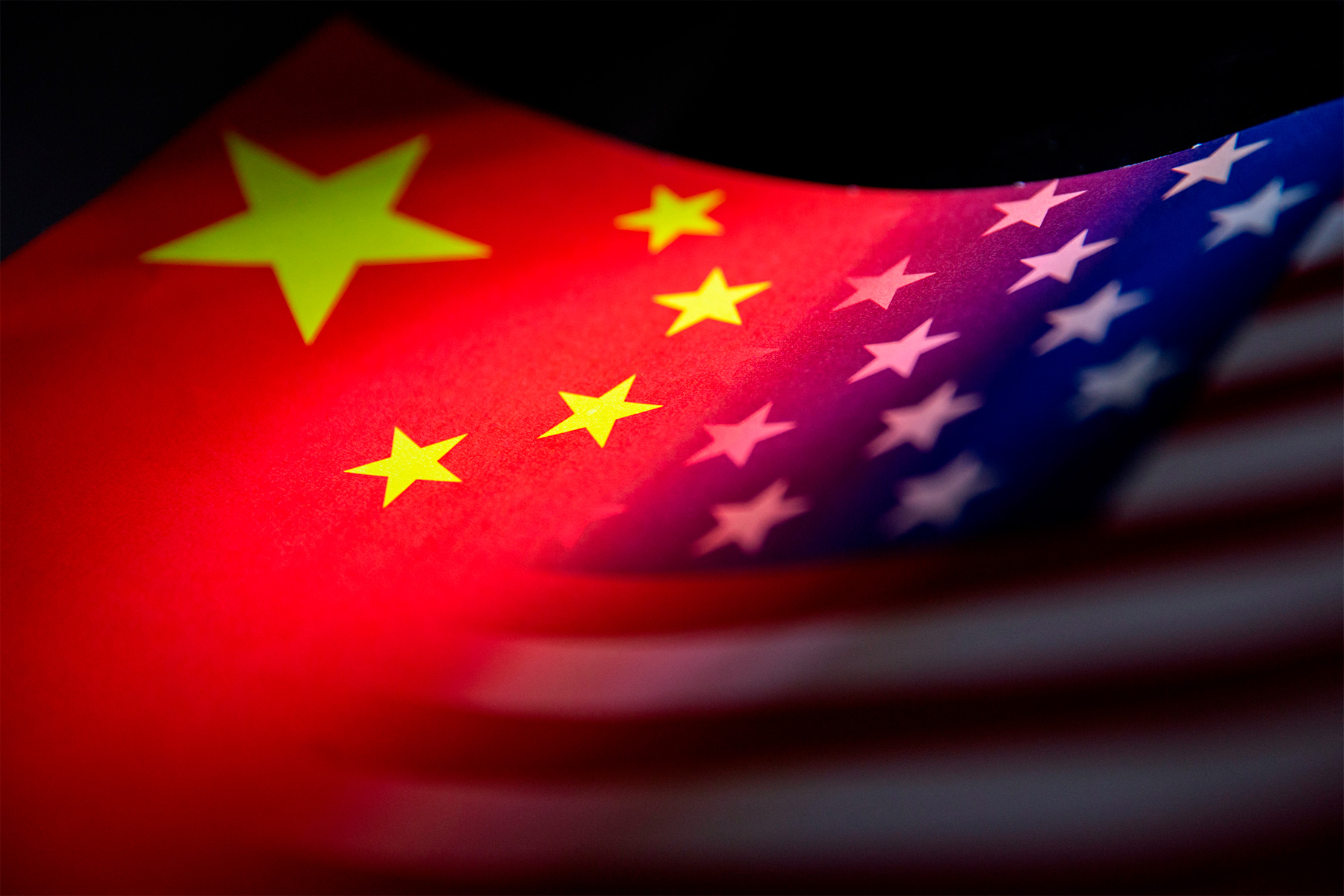The deterioration of US-China relations has long been a generally recognised trend. Contradictions on specific issues, such as human rights, have been accumulating since the boom in trade between the two countries in the 1990s and 2000s. The high-tech sector has become a key front for containing China. The general line of Washington is to limit the access of Chinese companies to the technologies of the United States and its allies. Such technologies can solve dual-use problems and lead to the subsequent modernisation of the PRC in both the military and civilian sectors.
Another indicator of China’s containment in the field of high technologies is President Biden’s new Executive Order “On Addressing United States Investments in Certain National Security Technologies and Products in Countries of Concern.”
The Executive Order implies at least two innovations. First, the Administration, represented by the State and Commerce Departments, must create a list of foreign persons who are individuals or legal entities from a particular Country of Concern. In this case, from China. Such persons must be connected in one way or another with high-tech transactions mentioned in the Order. In other words, we are talking about creating another list, which, most likely, will name large Chinese technology and industrial companies and, possibly, their leaders or individual employees. Second, US citizens will be required to notify the authorities of certain transactions with these individuals. In addition, a number of other transactions will be prohibited. The list of such transactions must also be determined by the Administration and periodically subject to revision.
The new legal mechanism gives the Administration wide room to limit Chinese companies’ access to US high-tech firms. The flexibility of the mechanism will be determined by the ability to revise the categories of transactions, technologies and foreign entities that are subject to restrictions. At the same time, the mechanism is likely to provide more opportunities, in comparison with the norms that already exist.
The intensity of US sanctions against China is incomparable to the volume of US restrictions on Russia. However, there is no guarantee that Beijing will not face a similar scenario in the future. Back in 2016, publications cautioning about possible US sanctions against China presented an unlikely scenario. However, the situation in the early 2020s is already significantly different from that reality. The United States and China assume the irreversibility of confrontation, but for their own reasons, they delay its escalation. This does not mean that sooner or later there will not be a landslide fall in relations. Predicting exactly the timing and scale of such a fall is as difficult as was predicting a crisis in relations between Russia and the West. In the meantime, there is a gradual accumulation of restrictive measures, one of which was Biden’s new Executive Order. The creeping nature of the escalation gives Beijing time to prepare for the worst-case scenario.
The deterioration of US-China relations has long been a generally recognised trend. Contradictions on specific issues, such as human rights, have been accumulating since the boom in trade between the two countries in the 1990s and 2000s. During the presidency of Barack Obama, the outlook for bilateral ties gradually began to darken against the backdrop of the US pivot to Asia, the situation in the South China Sea, and several incidents in the digital environment. Donald Trump took an even tougher line toward Beijing, directly voicing Washington’s entire list of claims against China.
The high-tech sector has become a key front for containing China. The general line of Washington is to limit the access of Chinese companies to the technologies of the United States and its allies. Such technologies can solve dual-use problems and lead to the subsequent modernisation of the PRC in both the military and civilian sectors. President Joe Biden has continued the prior administration’s protectionist course, which confirms the absence of critical inter-party differences on the issue of relations with China. Another indicator of China’s containment in the field of high technologies is President Biden’s new Executive Order “On Addressing United States Investments in Certain National Security Technologies and Products in Countries of Concern.”
The new Executive Order introduces a National Emergency due to the fact that individual countries use access to US civilian technology to develop their military-industrial complex. In the annex to the Order, China is named as such a country, as well as the special administrative regions of Hong Kong and Macau. The very concept of the National Emergency concept has its own specifics. More than four dozen states of emergency are simultaneously in effect in the United States with regards to various foreign policy issues. The president imposes them on the basis of the International Emergency Economic Powers Act of 1977 (IEEPA), which gives the US Commander-in-Chief the ability to use economic sanctions to counter existing threats. That is, a state of emergency is introduced on a selective issue, and serves as the basis to exercise individual powers.
The Executive Order implies at least two innovations. First, the Administration, represented by the State and Commerce Departments, must create a list of foreign persons who are individuals or legal entities from a particular Country of Concern. In this case, from China. Such persons must be connected in one way or another with high-tech transactions mentioned in the Order. In other words, we are talking about creating another list, which, most likely, will name large Chinese technology and industrial companies and, possibly, their leaders or individual employees. Second, US citizens will be required to notify the authorities of certain transactions with these individuals. In addition, a number of other transactions will be prohibited. The list of such transactions must also be determined by the Administration and periodically subject to revision.
The new legal mechanism gives the Administration wide room to limit Chinese companies’ access to US high-tech firms. The flexibility of the mechanism will be determined by the ability to revise the categories of transactions, technologies and foreign entities that are subject to restrictions. At the same time, the mechanism is likely to provide more opportunities, in comparison with the norms that already exist.
Among the previously-imposed restrictions, one can note the prohibition of Americans from buying or selling securities of “Chinese military companies”. The ban was introduced by Donald Trump in November 2020. Biden modified it somewhat, but without major changes. The appendix named the largest Chinese companies in the field of telecommunications, aircraft manufacturing, electronics, etc. Even earlier, in May 2019, Donald Trump declared a National Emergency due to threats to the US telecommunications sector (Executive Order 13873).
The Chinese telecommunications company Huawei and a number of its subsidiaries were included in the Entity List of the US Department of Commerce — it was forbidden to supply certain goods in the field of electronics, including manufactured outside the USA using American technology. In addition, a number of Chinese companies have been placed on the Military End User List (MEU-List). These companies are prohibited from supplying certain items on the US Department of Commerce’s Commerce Control List.
Such restrictions have a negative background: separate legal mechanisms for sanctions against Chinese persons in connection with the situation in Hong Kong, the Xinjiang Uygur Autonomous Region (XUAR), etc. In addition, members of Congress periodically propose sanctions bills against China in connection with a variety of reasons, starting from the already familiar topics of human rights and ending with sanctions for possible cooperation with Russia. During the presidency of Joe Biden, none of these projects became law, which does not exclude the adoption of those and other bills in the future.
However, the intensity of US sanctions against China is incomparable to the volume of US restrictions on Russia. So, for example, the number of Chinese persons under blocking US financial sanctions can be measured in the dozens, while the number of Russians already exceeds 1,700. This does not include those persons in respect of whom the so-called “Rule of 50%” is in force, extending blocking sanctions to subsidiaries and controlled enterprises. The same can be said about export controls.
Restrictions against Huawei, the creation of a list of Chinese military companies, and the replenishment of the list of military end users by Chinese enterprises create a media response. But compared to the restrictions against Russia, the sanctions against China are still negligible. It is forbidden to supply almost all dual-use goods, hundreds of industrial goods and “luxury goods” to Russia, including consumer electronics and appliances. Large-scale restrictions on Russian imports and transport sanctions complete the picture. In addition, the United States has managed to build an impressive coalition of sanctions allies against Russia, while it is much more difficult to create such a coalition against China.
However, there is no guarantee that Beijing will not face a similar scenario in the future. Back in 2016, publications cautioning about possible US sanctions against China presented an unlikely scenario. However, the situation in the early 2020s is already significantly different from that reality. The United States and China assume the irreversibility of confrontation, but for their own reasons, they delay its escalation. This does not mean that sooner or later there will not be a landslide fall in relations. Predicting exactly the timing and scale of such a fall is as difficult as was predicting a crisis in relations between Russia and the West. In the meantime, there is a gradual accumulation of restrictive measures, one of which was Biden’s new Executive Order. The creeping nature of the escalation gives Beijing time to prepare for the worst-case scenario.
First published in the Valdai Discussion Club.





